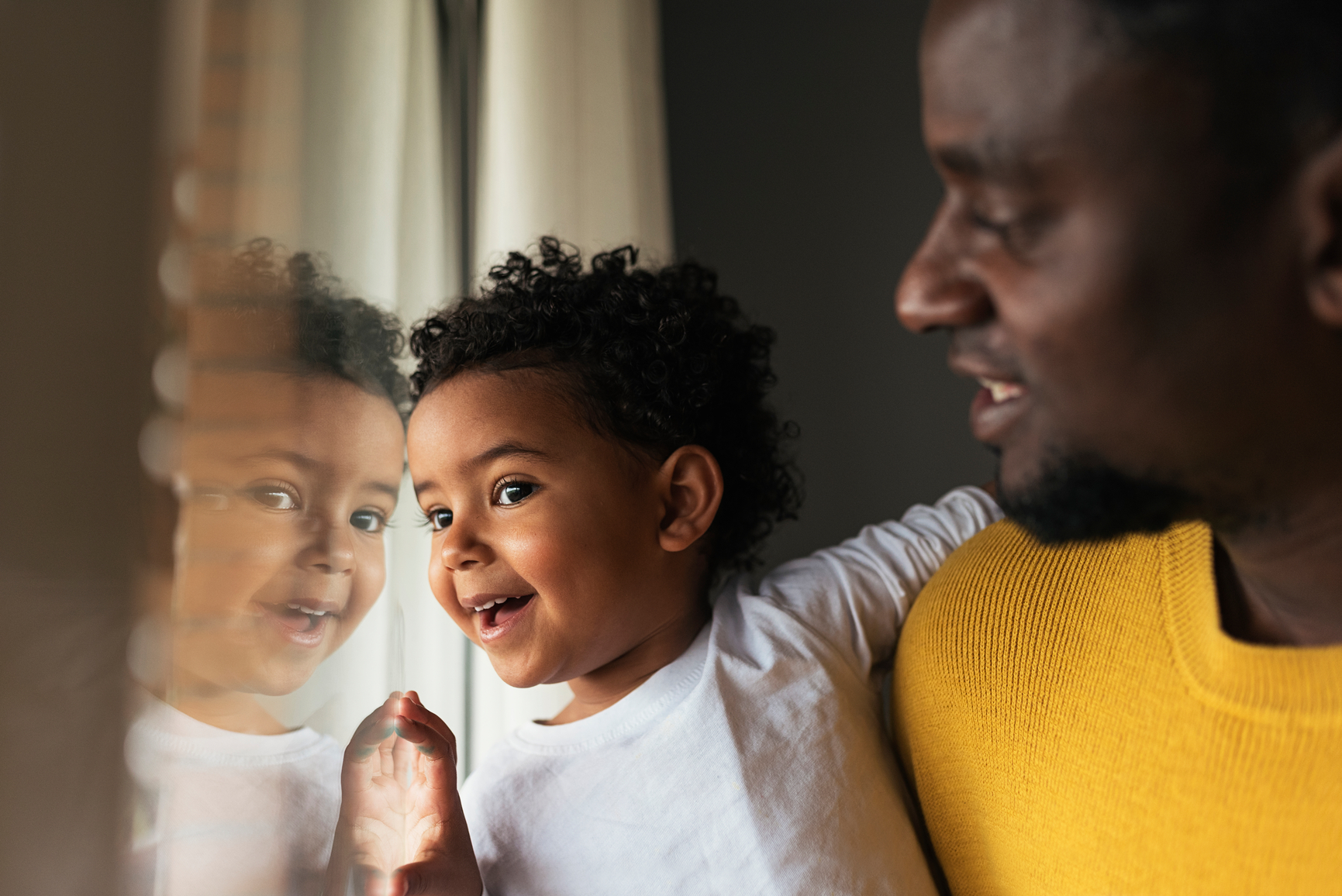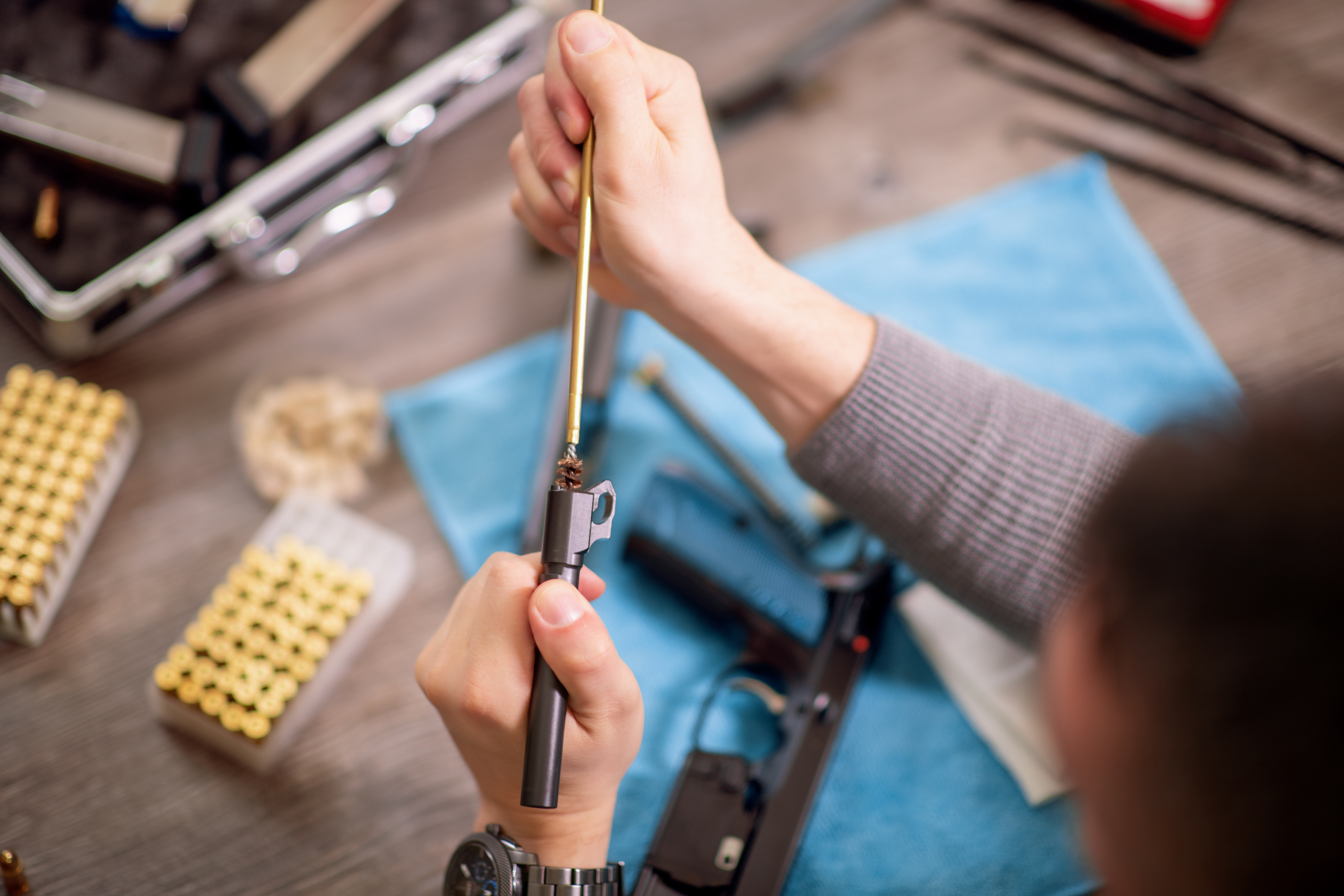Unintentional Firearm Injury
Everyone with access to a gun is at risk of unintentional injury
Clinicians should talk to parents and caregivers about risk of unintentional firearm injury and how to reduce it.
Unintentional firearm deaths happen more frequently in the US than in other countries.1 For every unintentional firearm death, there are about 83 unintentional nonfatal injuries caused by firearms across the country.2 These preventable injuries and deaths may have long-lasting psychological consequences for victims, families, and communities. The risk of unintentional firearm injury can be reduced by safely storing all firearms unloaded, locked up, and separate from ammunition, or by removing them from one’s home. For owners who keep a firearm loaded for self-protection, rapid-access secure storage methods may be preferred.
The Numbers
Although unintentional deaths from firearms are only a small percentage (1-2%) of total firearm deaths,3,4 they occur four times more often in the US than in comparable, high-income countries.1 Nationally, half of all nonfatal firearm injuries are unintentional.2 On average, there are 526 unintentional deaths and another 43,729 unintentional injuries due to firearms each year. In California, about 50 unintentional firearm deaths and another 1,800 unintentional nonfatal injuries occur annually.3,5 The majority (67%) of unintentional firearm deaths involve a handgun.6
Adults and children can sustain unintentional firearm injuries in a variety of ways, including by:
- not recognizing that a gun is loaded
- handling a firearm when impaired (e.g., under the influence of drugs or alcohol)
- accidentally firing a gun while cleaning it
- lacking proper training in handling and using a gun
- thinking a real gun is a toy
Clinicians should talk with patients, parents, and other caregivers about the risk of unintentional firearm injury and how to reduce it.
Who’s at Risk
Children

While most caregivers have good intentions for protecting children from firearm-related harm, many underestimate their children’s knowledge of a gun in their home. A study that surveyed parents and children separately about firearms in their home found that two in five parents incorrectly believed that their child didn’t know where the gun was kept, and one in five incorrectly believed that the child had never handled the weapon without their consent.7
Though many parents believe that educating children to keep away from firearms is effective, evidence suggests that school-based education programs and public education campaigns that teach this practice do not reduce children’s unsupervised handling of firearms.8-10
Children ages 10-19 are at highest risk of unintentional firearm death among all age groups, and the majority of children who die by unintentional firearm injury were playing with the gun at the time they were shot. A study of 16 states found that 43% of unintentional gun deaths in this age group took place while the victim or someone else was playing with a gun. In fewer cases, a death occurred when someone thought the gun was unloaded (27%), while hunting (15%), and while loading or cleaning a gun (13%). Among children 0-9 years old, a greater percentage of deaths (64%) were due to someone playing with a gun. In general, male children are at higher risk than females.11
In California, about 6% of children live in homes with firearms.12 Roughly two-thirds of firearm owners who live with children don’t store all firearms in the most secure way (i.e., locked up and unloaded).12,13
Adults
Compared to children and teens, adults are more likely to fatally shoot themselves on accident than they are to shoot another person.11 For adults ages 40 and older, unintentional fatal  injuries more often occur while hunting or while cleaning or loading a gun than while playing with a gun.
injuries more often occur while hunting or while cleaning or loading a gun than while playing with a gun.
Using drugs or alcohol while handling firearms may also increase the risk of unintentional injury: alcohol was suspected in nearly half of unintentional firearm injury deaths from 2005-2015 among those ages 20-29, and nearly 40% of those ages 30-39.11 Adults who are unfamiliar with firearms or not trained in safe handling may also be more likely to sustain an unintentional injury.
In general, men are at a higher risk of unintentional firearm injury — fatal and nonfatal — than women.5,11 In California, 88.5% of unintentional nonfatal firearm injuries between 2005 and 2015 were among men.5
What You Can Do
Clinicians can play a crucial role in reducing unintentional firearm injury. Nonetheless, few providers have conversations with patients about the risks, or provide guidance to families about safer storage. In fact, survey research suggests that fewer than 8% of US gun owners who live with children have ever had a clinician speak with them about firearm safety.14
Barriers cited include lack of time, not knowing how to counsel patients and caregivers, and fear of alienating patients.15 Many clinicians do not know that if patients or parents choose to keep guns in the home, they should be stored securely (locked up, unloaded, with ammunition locked separately).
Most Californians, including those who own guns and live in homes with guns, think it’s appropriate for providers to talk about gun safety.16

Clinicians should make clear that questions about the presence of firearms in the home are solely about risk reduction. These questions can be framed in the same way as questions about other household risks, such as water heaters, medications, and swimming pools. Clinicians should advise all patients and caregivers who have firearms at home to store them:
- Unloaded
- Locked up, using a locking device
- Separate from ammunition, which should also be locked up
By engaging in a tailored conversation, clinicians can work with parents, caregivers, or patients at risk of unintentional injury to determine the most acceptable safe storage options. If the patient or caregiver present isn’t the owner of the guns in the home, clinicians can still make concrete recommendations for discussion with the gun owner.
Parents and caregivers may ask clinicians for advice on how to talk with their children about firearms. If there are firearms in the home, being open about their presence and teaching children safe practices, including what to do if they encounter a firearm, may be beneficial. Tips clinicians can provide to parents include:17
- Talk to children about the importance of safe firearm practices starting at a young age and routinely as children get older, adding age-appropriate information
- Ask children what they know about firearms and what questions they have
- Advise children, if they come across a firearm and even if it looks like a toy, not to touch it and to tell an adult
Clinicians should remind parents that talking with children and adolescents about safe storage and practices does not replace practicing safe storage at home.
Clinicians can consider advising patients and caregivers to participate in formal firearm safety training if they haven’t already. Only about three-fifths of firearm owners in the US have received such training (two-thirds of male owners and half of female owners).18 The topics covered in gun safety training vary widely but may include basic safe handling and shooting techniques, how to use a gun safely, and recommended safe storage options.19
Firearms kept any place a child goes, whether in their home or elsewhere, should be kept unloaded and locked up. The Asking Saves Kids (ASK) campaign is a resource for caregivers on how to have conversations about unlocked firearms in other homes where their children play or visit.
Dr. Lena Rothstein from the University of California, Davis contributed to this content.
- Violent death rates in the US compared to those of the other high-income countries, 2015. Preventive Medicine.
- Epidemiologic trends in fatal and nonfatal firearm injuries in the US, 2009-2017. JAMA Internal Medicine.
- Firearm mortality in California, 2000-2015: The epidemiologic importance of within-state variation. Annals of Epidemiology.
- Web-based Injury Statistics Query and Reporting System (WISQARS) [online].
- Incidence, distribution, and lethality of firearm injuries in California from 2005 to 2015. JAMA Network Open.
- Surveillance for Violent Deaths— National Violent Death Reporting System, 34 States, Four California Counties, the District of Columbia, and Puerto Rico, 2017. MMWR Surveill Summ.
- Parental Misperceptions About Children and Firearms. Archives of Pediatrics & Adolescent Medicine.
- An evaluation of two procedures for training skills to prevent gun play in children. Pediatrics.
- School-Based and Community-Based Gun Safety Educational Strategies for Injury Prevention. Health Promotion Practice.
- Parents' beliefs about children and gun safety. Pediatric Nursing.
- Unintentional firearm deaths in the United States 2005-2015. Injury Epidemiology.
- [California Safety and Wellbeing Survey, 2018]. Unpublished raw data.
- Firearm Storage in Gun-Owning Households with Children: Results of a 2015 National Survey. Journal of Urban Health.
- Firearm Safety Discussions Between Clinicians and U.S. Adults Living in Households With Firearms: Results From a 2019 National Survey. Annals of Internal Medicine.
- Yes, You Can: Physicians, Patients, and Firearms. Annals of Internal Medicine.
- California Public Opinion On Health Professionals Talking With Patients About Firearms. Health Affairs.
- Gun Safety for Children. JAMA Pediatrics.
- Firearms training and storage practices among US gun owners: a nationally representative study. Injury Prevention: Journal of the International Society for Child and Adolescent Injury Prevention.
- Firearms training: what is actually taught? Injury Prevention: Journal of the International Society for Child and Adolescent Injury Prevention.
Learn more about potential interventions
If guns are kept in the home, storing them safely can prevent firearm injury.
For more information, see these peer-reviewed articles.
Monuteaux, M. C., Azrael, D., & Miller, M. (2019). Association of Increased Safe Household Firearm Storage With Firearm Suicide and Unintentional Death Among US Youths. JAMA Pediatrics.
Ngo, Q. M., Sigel, E., Moon, A., et al. (2019). State of the Science: A Scoping Review of Primary Prevention of Firearm Injuries Among Children and Adolescents. Journal of Behavioral Medicine.
Garbutt, J. M., Bobenhouse, N., Dodd, S., et al. (2016). What Are Parents Willing to Discuss with Their Pediatrician About Firearm Safety? A Parental Survey. Journal of Pediatrics.
Olson, L. M., Christoffel, K. K., & O’Connor, K. G. (2007). Pediatricians’ involvement in gun injury prevention. Journal of the International Society for Child and Adolescent Injury Prevention.
Johnson, R. M., Miller, M., Vriniotis, M., et al. (2006). Are household firearms stored less safely in homes with adolescents? Analysis of a national random sample of parents. Archives of Pediatrics & Adolescent Medicine.
Additional Resources on Unintentional Firearm Injuries
Safe Storage Infographic (English)
Print this infographic and hang it in your waiting room, exam room, or other clinic spaces to remind patients and clinicians about the importance of safe firearm storage.
External ResourceAsking Saves Kids
Asking parents and guardians questions about the presence of a firearm in the home can save childrens' lives.
AAP Guidelines for Gun Safety and Children
Guidelines and resources on firearm safety and children by the American Academy of Pediatrics (AAP).
Now More Than Ever | Gun Safety | Ad Council
PSA by Ad Council on safe gun storage in homes with kids to make homes safer and save lives.
Project ChildSafe: Parents and Gun Owners
Guidelines, online brochures, and safety kit request for parents with access to a firearm.
CSN’s Firearm Safety: Resource Guide
A resource guide on firearm safety and firearm violence prevention containing evidence-informed interventions, firearms data, state legislation about firearms, and organizations to contact for additional information.
